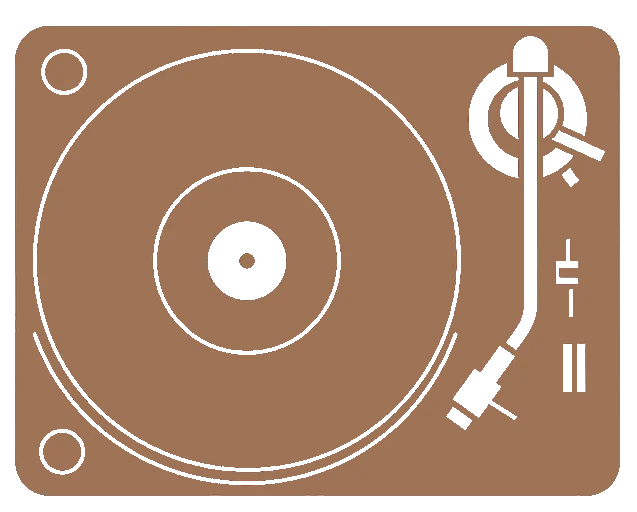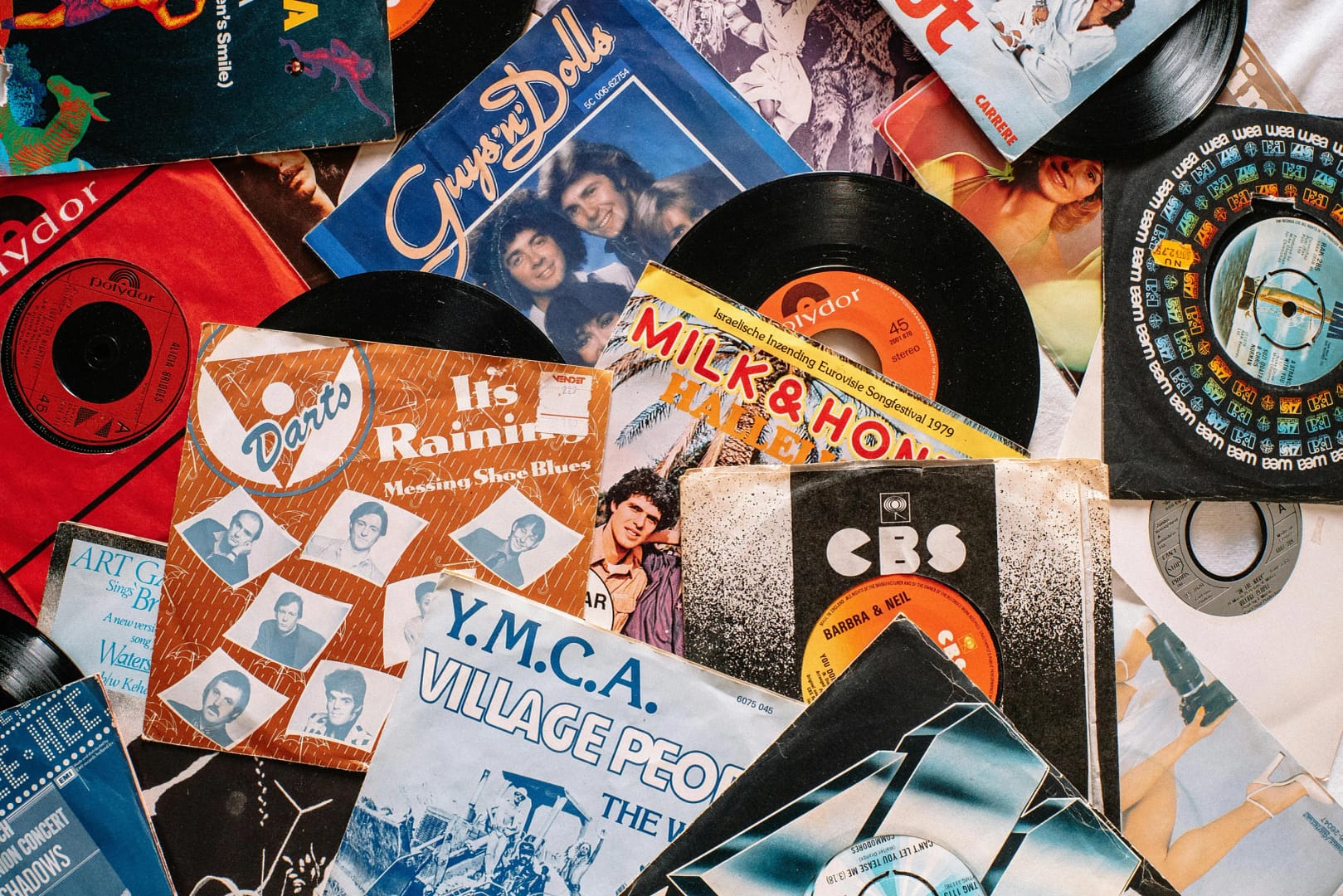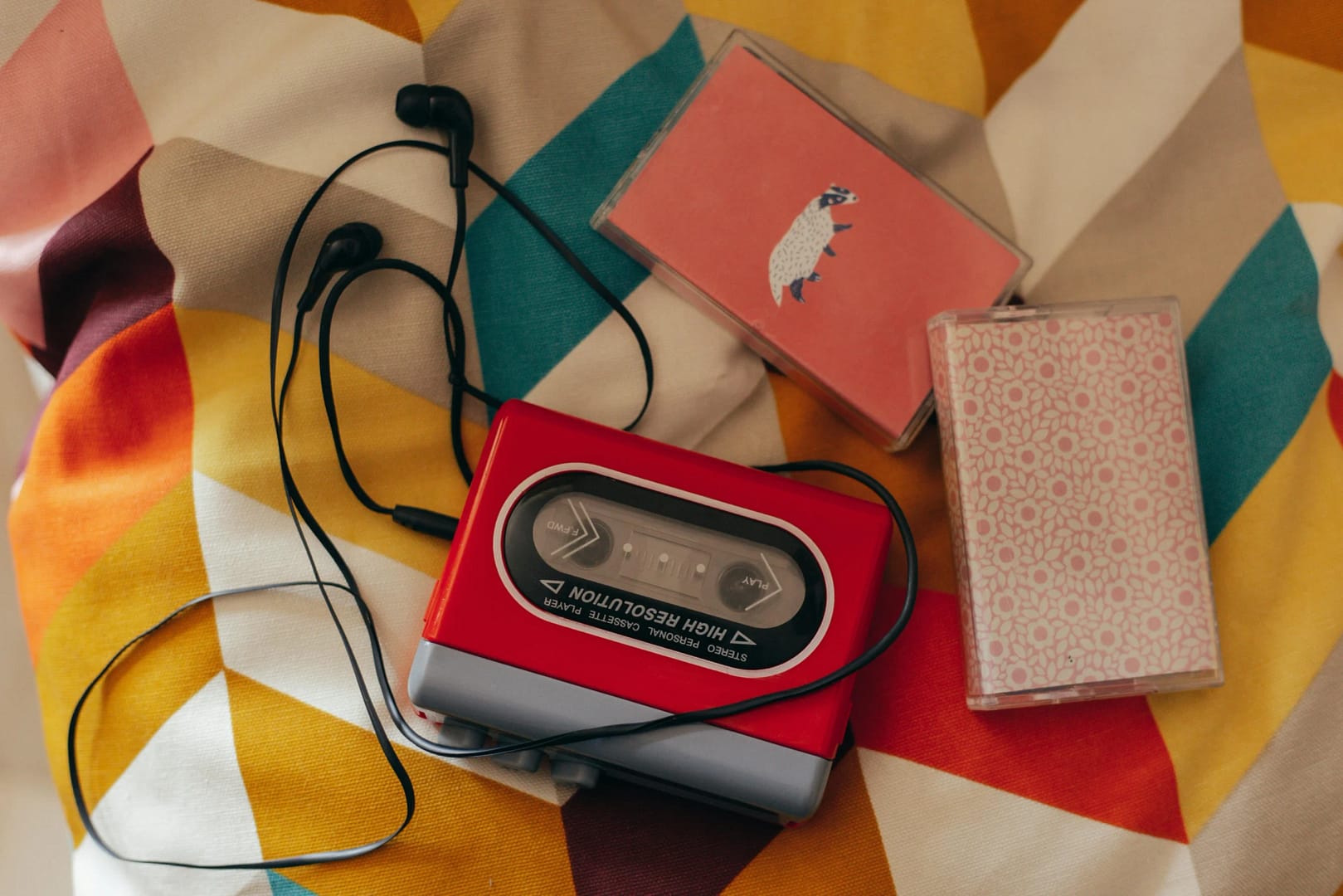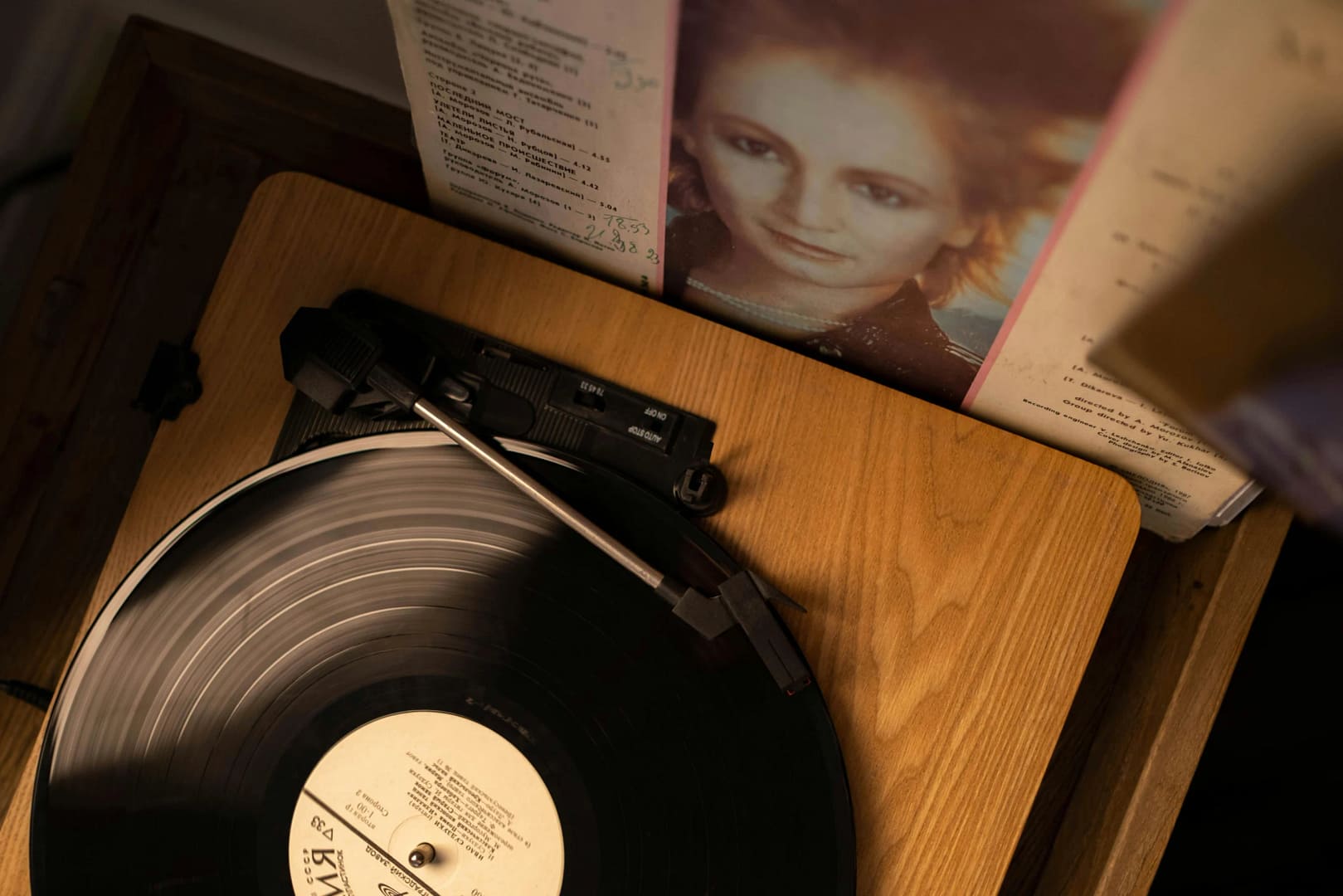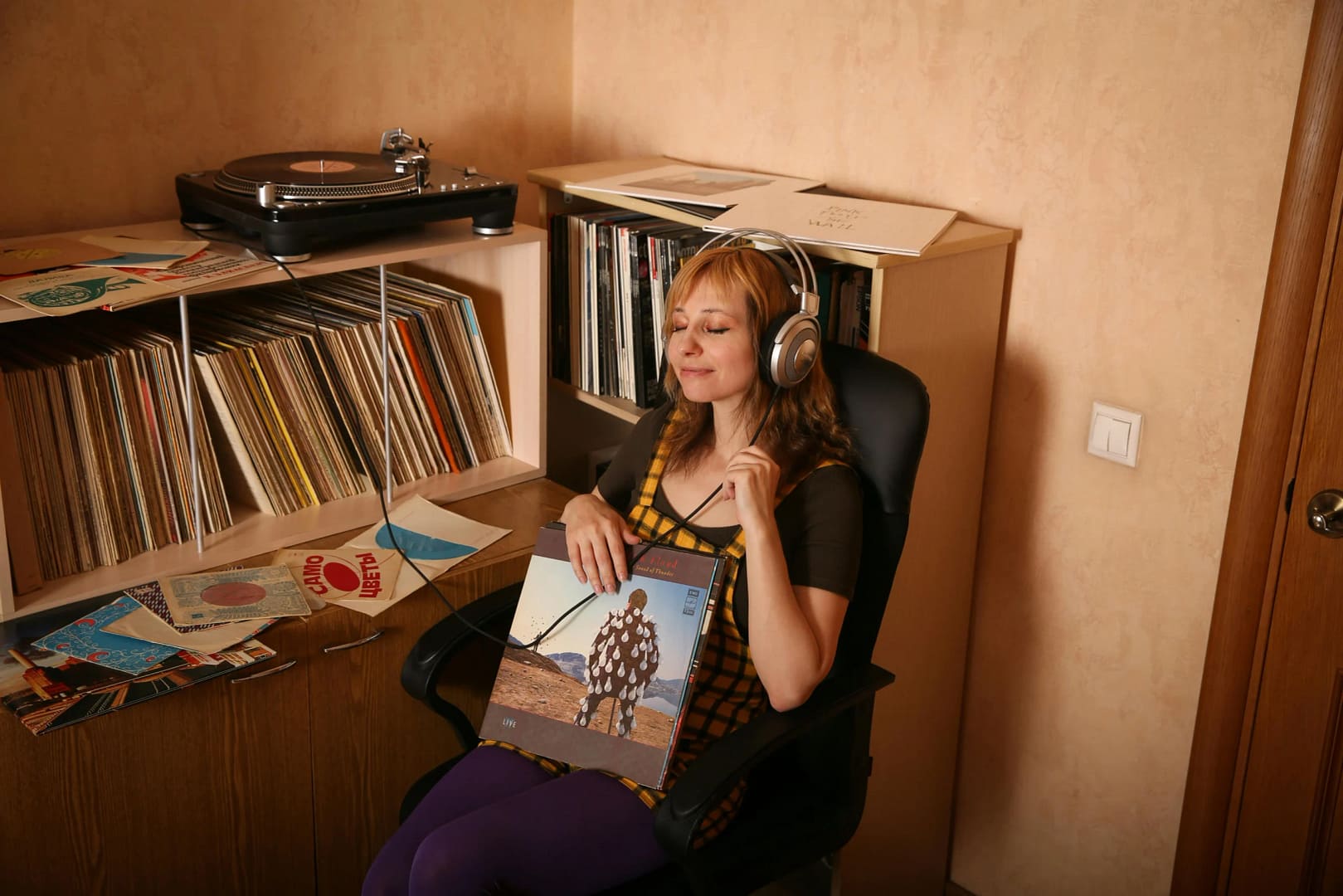If you’re diving into the wonderful world of vinyl, you’ve probably noticed that records come in different sizes and spin at different speeds. It may seem confusing initially, but vinyl record sizes are pretty straightforward once you get the hang of it.
Think of it like this: size often relates to how much music fits, and speed affects how that music plays back. Let’s explore the details together, exploring the common formats you’ll encounter in record shops and collections.
Vinyl Record Sizes
You’ll mainly come across three standard sizes for vinyl records, each typically associated with a specific type of release.
7 inch
This little guy is what most people call a “single.” Back in the day, this was the main way to buy your favorite hit song, usually with another track (the “B-side”) on the flip. They almost always spin at 45 RPM (Revolutions Per Minute).
Because they’re small and hold less music, they were perfect for jukeboxes, so many have that large center hole. You might need a small 45 RPM adapter to play these on your turntable’s standard spindle. They’re fun to collect but don’t offer the extended listening of an album.
10 inch
The 10-inch is less standard today but has a cool history. It was the original size for LPs (Long Play records) when they first emerged! Nowadays, you’ll find EPs (Extended Plays – more music than a single, less than an album) or special edition releases in this format.
These can spin at 33 1/3 RPM or sometimes 45 RPM. Very old records from the Shellac era (before vinyl) were often this size but spun at 78 RPM (more on speeds later!). 10-inch records are a neat format, but their relative rarity makes them less of an everyday find compared to 7s and 12s.
45 RPM Record Adapter for Turntables and Record Players

- Use a 45 RPM record adapter on your existing turntable to play 7 inch 45 RPM records with large spindle holes.
12 inch
This is the king! The 12-inch record is the standard format for full-length albums (LPs). Spinning primarily at 33 1/3 RPM, these offer the longest playing time, typically around 15-25 minutes of music per side. The large size also means big, beautiful cover art!
While most 12-inch records are 33 1/3 RPM LPs, you’ll also find 12-inch singles or EPs, often spun at 45 RPM for potentially higher sound quality over a shorter playing time. Their only real drawback is needing more space when you properly store your record collection.

Vinyl Record Speeds
The speed at which a record spins is crucial – play it at the wrong speed, and your favorite singer might sound like a chipmunk or a sluggish giant! The speed is measured in RPM (Revolutions Per Minute).
33 1/3 RPM
This speed became the standard for 12-inch LPs because it offered the best compromise between playing time and sound fidelity for the vinyl format. Most of the albums in your collection will likely be this speed.
It allows for that sweet spot of about 20 minutes per side on a 12-inch record, perfect for fitting a whole album experience with decent sound quality.
45 RPM
Spinning faster at 45 revolutions per minute is standard for 7-inch singles. Because the groove moves past the stylus faster than on a 33 1/3 RPM record, potentially more sonic information is captured per second.
You’ll also find 12-inch records cut at 45 RPM. These are usually EPs or special “audiophile” pressings of albums, often spread across two discs instead of one. The trade-off is significantly less playing time per side than a 33 1/3 RPM LP.
Hudson Hi-Fi Turntable Strobe Disc Mat

- Ensure your turntable is spinning at the right speed with a strobe disc mat.
78 RPM
This is the granddaddy of record speeds! Before vinyl, records were commonly made of shellac, a more brittle material, and they spun at a speedy 78 revolutions per minute. These were standard from the early 1900s until the late 1940s/early 1950s.
Playing 78s requires a wider stylus (needle) because the grooves are much larger than on vinyl microgroove records.8 Playing them with a modern vinyl stylus can damage the record and the needle. They are fragile and hold only a few minutes of audio per side.
Do Record Speeds Affect the Sound Quality?
Yes, speed can affect sound quality. Think of it like video resolution – more information per second can lead to higher fidelity. A faster speed means more vinyl passes under the stylus each second. Higher speed allows for potentially better high-frequency response and dynamic range, so audiophiles often seek 45 RPM pressings (both 7-inch and 12-inch).
However, the quality of the original recording, the mastering process, and the pressing itself play enormous roles too. A well-mastered 3331 RPM LP can sound better than a poorly done 45 RPM single!
Vinyl Record Sizes FAQs
How do you tell if a record is 33, 45, or 78?
The easiest way is to look at the record label near the center hole! Most records will print the speed, like “33 1/3 RPM” or “45 RPM”. Size can be a big clue, too: most large 12-inch records are 33 1/3 RPM albums, and most small 7-inch records are 45 RPM singles.
Telling a 78 RPM record apart from the label involves other clues. These are usually older (pre-1950s), feel heavier and thicker because they’re made of shellac, not vinyl, and have visibly wider grooves. Unless you collect very old recordings, most records you encounter today will be 33 1/3 or 45 RPM vinyl.
Is 12-inch vinyl 33 or 45 RPM?
A 12-inch record is usually 33 1/3 RPM—that’s the standard speed for LPs (full albums). This speed balances fitting a good amount of music per side and providing good sound quality.
However, you’ll find 12-inch records designed to be played at 45 RPM. These are usually singles (sometimes called “maxi-singles” with extended mixes) or special audiophile pressings of albums. They sacrifice playing time for potentially higher sound fidelity.
Do 45’s sound better than 33’s?
In theory, 45 RPM records can sound better than 33 1/3 RPM records. Because the vinyl spins faster, more groove length passes under the stylus each second. This extra “space” allows for a potentially wider dynamic range and better high-frequency detail to be cut into the groove.
But – and this is a big but – it’s not a guarantee! The quality of the original recording, the mastering engineer’s skill, and the vinyl pressing itself are hugely important. A brilliantly mastered 33 1/3 RPM record can easily sound better than a mediocre 45 RPM pressing.
What happens if you play a 45 record at 33?
If you accidentally play a record meant for 45 RPM at the slower 33 1/3 RPM speed, everything will sound… well, slow! The music’s tempo will drag, and the pitch will drop significantly, making singers sound like they’ve got a deep, booming voice and turning upbeat tracks into sluggish dirges.
It’s usually pretty obvious that something’s wrong! Thankfully, it doesn’t harm the record or your player. Just lift the needle, switch your turntable’s speed selector to the correct 45 RPM setting, and try again—everything should sound normal then.
